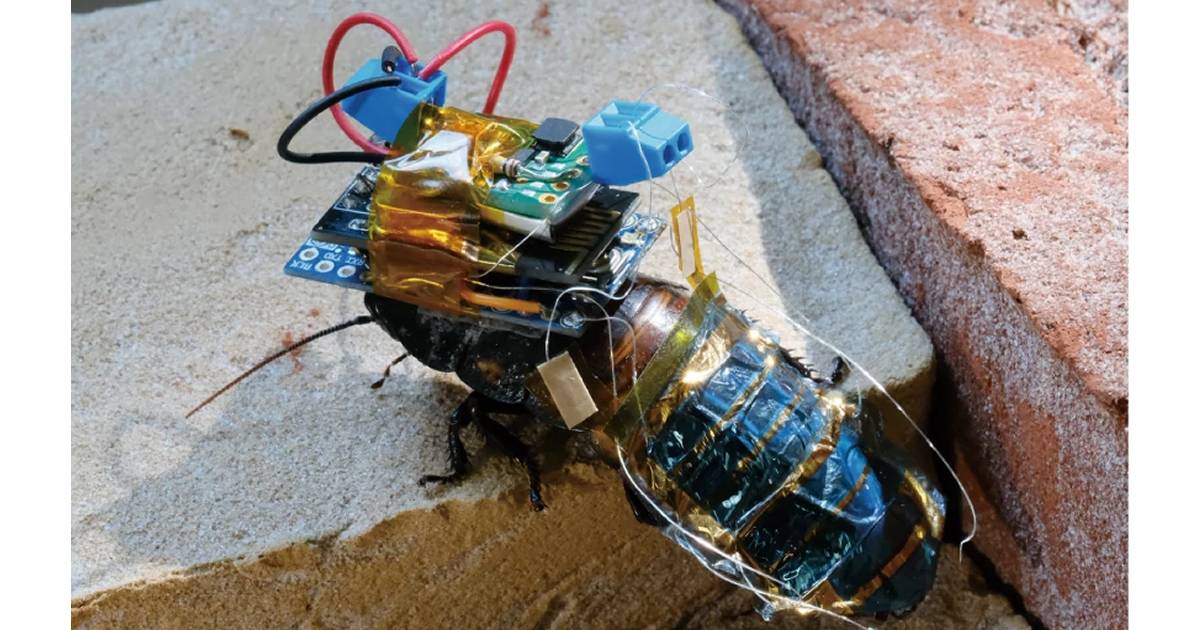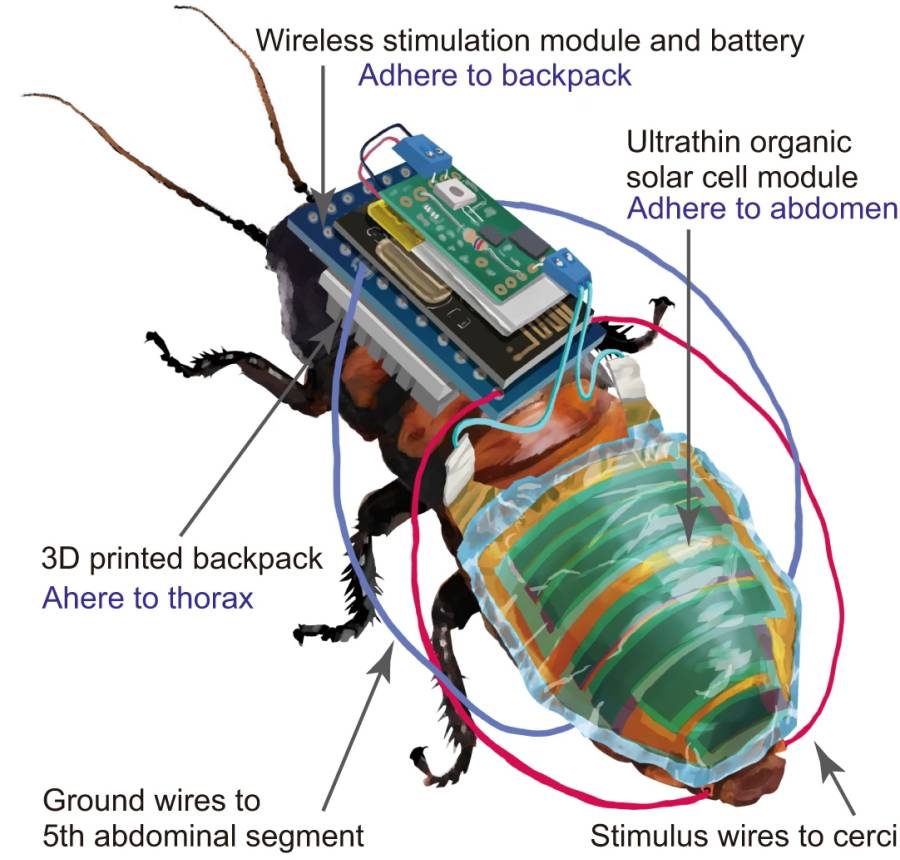Researchers have come up with a system for creating remote-controlled “cyborg” cockroaches that involves the use of a tiny solar cell and lithium ion battery. But why?
The term “cyborg” is a portmanteau comprised of the words cybernetic and organism – a being with organic and biomechatronic body parts.
There’s been a fair bit of tinkering with creating cyborg insects over the years. Some of these attempts have involved sending tiny electrical impulses to an insect’s right or left antenna lobe that makes the insect think it has come up against an obstacle. Stimulate the left lobe, it will turn right – the right lobe, left.
Another involves electrical stimulation applied to the right or left cercus, which are appendages at the rear of some insects’ abdomens that detect vibrations. In the case of the cockroach, cerci are directly connected to its legs. When a presence is detected, the roach starts running. Electrical stimulation of the right cercus will see the insect go to the right; on the left, to the left.
In the latter, a major challenge has been creating a suitable energy source for powering wireless remote control of the cockroach’s legs. Another has been building a system that enables the insect to maintain its flexibility.
RIKEN Cluster for Pioneering Research (CPR) in Japan appears to have come up with a viable solution.
The team worked with Madagascar hissing cockroaches (Gromphadorhina portentosa). These aren’t the run of the mill cockroaches you might find in your home. They are really big, growing up to 7.5cm long.
A wireless leg-control module and lithium polymer battery were affixed to the top of the cockroach using a specially designed 3d-printed backpack conforming to the curved surface of the cockroach. This enabled the device to be mounted for more than a month.
So, that was energy storage sorted – but what about the power source?
An ultra-thin 0.004 mm thick flexible organic solar cell was mounted on the dorsal (top) side of the abdomen, enabling freedom of movement. Commenting on its capabilities, RIKEN CPR’s Kenjiro Fukuda said:
“The body-mounted ultrathin organic solar cell module achieves a power output of 17.2 mW, which is more than 50 times larger than the power output of current state-of-the art energy harvesting devices on living insects.”
Mr. Fukuda said the strategy can be adapted to other insects such as beetles, or potentially flying insects like cicadas in the future.
Further information on RIKEN’s work on its solar powered cyborg cockroach can be found here – there are lots of details provided to geek out on.
Now To The Why
So, why are cyborg insects even a thing?
Some of their potential applications include exploring contaminated or other disaster areas that humans can’t easily or safely access – for example under a collapsed building. Flying cyborg insects could be used in search and rescue missions to help cover large areas. They could also be used for general surveillance, which could be a double-edged sword.
Just Because You Can Do Something …
This is a really interesting use of solar and energy storage technology. But the concept of cyborg insects raises a few questions; including are insects sentient and if so does tinkering like this constitute animal (insect) cruelty? While the jury is still out on insect sentience, in the words of thought leader Adam Ant:
“Don’t tread on an ant, he’s done nothing to you, there might come a time when he’s treading on you. Don’t tread on an ant, you’ll end up black and blue; cut off his head, legs come looking for you.”
Two drum kits – two!



 RSS - Posts
RSS - Posts



The rsoles who grotesquely torture animals in this way ought to be made to ‘carry the can’ themseves! WTF has homospiens become?
hi T. Jolly..
From what I have read I tend to agree..!!
What the hell are they doing this for..?
It is purely gratuitous torture for the poor insect